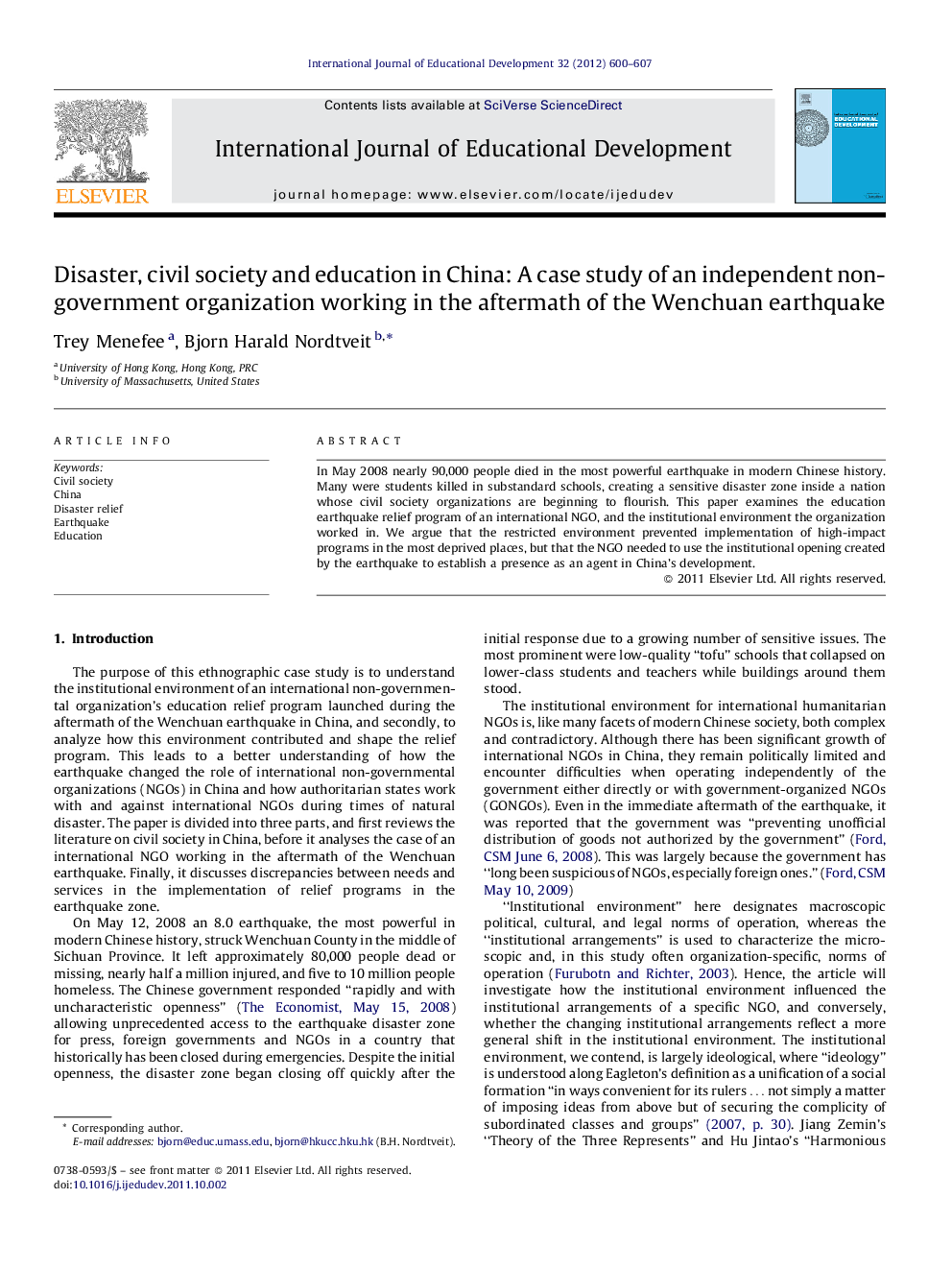| Article ID | Journal | Published Year | Pages | File Type |
|---|---|---|---|---|
| 356140 | International Journal of Educational Development | 2012 | 8 Pages |
In May 2008 nearly 90,000 people died in the most powerful earthquake in modern Chinese history. Many were students killed in substandard schools, creating a sensitive disaster zone inside a nation whose civil society organizations are beginning to flourish. This paper examines the education earthquake relief program of an international NGO, and the institutional environment the organization worked in. We argue that the restricted environment prevented implementation of high-impact programs in the most deprived places, but that the NGO needed to use the institutional opening created by the earthquake to establish a presence as an agent in China's development.
► The trust deficit of local citizens and officials towards NGOs restrains NGO action in China. ► The earthquake in Wenchuan was an opportunity for NGOs to create a foothold in the local society. ► The NGOs rarely were allowed to operate where the needs were greatest, or on issues of critical significance. ► Little changed institutionally for NGOs in the aftermath of the earthquake.
